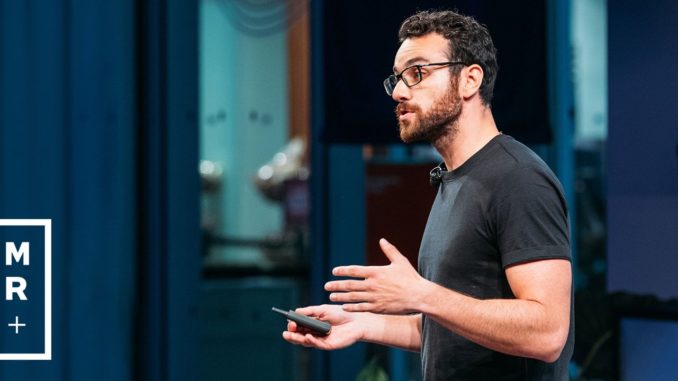
Zack Werner buoyantly asks a rapt crowd of sellers the number of their board members know what a deserted cart is. The CEO and creator of The Labyrinth Group continues, asking, “What about conversion rate? What about UTM parameters?” He pauses and smiles a little. “These are the terms that people like us tend to have to use every day to accomplish our jobs.”
And he’s right: These are commonplace phrases and ideas that, to a group of individuals in retail or ecommerce, are simple to comprehend. Speaking in this ecommerce vernacular is force of habit to a great deal of merchants.
For lots of, these buzzwords aren’t always so available. The non-technical class of company owners, C-suite executives, and board members are just not ecommerce operators. “It’s their task to comprehend the basic financial backbone of the company and keep it working on that side of things, not be fluent in today’s ecommerce vernacular,” Werner states.
And while these are essentially different viewpoints to handle, eventually, both are necessary to have as part of any conversation.
It’s Werner’s task to make sure everybody comprehends each other.
How to determine ROI in marketing yourself
Werner’s The Labyrinth Group– a digital consultancy– is a bit like an academic resource, a tutor of digital and ecommerce fundamentals with practical, real-time applications. Werner sees both himself and his team as a channel between established executives, boards, and financiers and the brand-new, tech-savvy ecommerce crowd. “Many of the time these people don’t speak the same language [that the online marketers developing the worth do], and they just wind up frustrated with each other, suppressing the growth of the business.”
But Werner believes both sides have the same goal: growth. “This collection in communication can develop a great deal of tension and it’s simply truly aggravating.” Fixing it is like resolving a puzzle. “Ecommerce is a really terrific and direct feedback loop if you’re fixing the data puzzle appropriately,” he states. Companies require to comprehend their customers, and often they are turning to platforms like Shopify to assist them offer and much better serve their market, but they likewise need the financiers to see the advantages of this path. Werner and The Labyrinth Group step in to piece together a suitable option for their customers.
“We basically think that there is a message and there’s delivery. We are shipment boys,” Werner says.
Nowadays, customers want to rely on a brand name, trust in the technology that brand uses, and trust in the experiences a brand name provides, from activations to the act of acquiring. Whatever adds up. Feelings or experiences around purchasing can be explained numerically up to a point, and the extremely easy act of having a good buying experience can result in repeat purchases.
Both the tech– smart online marketers and the bottom line– driven CEO want purchasers to purchase– and more often. The ecommerce specialists behind those delightful getting experiences might be advocating for a SaaS solution to deliver better item suggestions, but requesting costly financial investment in SaaS without sharing its anticipated ROI is maybe where the barrier starts. It’s a marketing chicken and the egg scenario: Which will precede? Convincing decision-makers to purchase brand-new software application without concrete numbers is tough however possible.
Serving customized product suggestions implies that:
You can’t predict anticipateWhatever but however associating numbers, some cost, in the beginningStart is an easier simpler than abstract concepts principles what could mightTake place The board and CEO are occupied with contextualizing this info for their own world, like whether an investment is an OPEX or a one-time CAPEX cost, and how it will ultimately include to their overall business worth– so it is very important for CMOs to address those objectives and discomfort points.
Believe of including software application to your innovation stack, like Shopify, and what the expense will be for a financial investment to supply a return. Marketers can measure this by developing their own financial models and looking at different parts of an ecommerce operation to assist find out what the effect down line will be.
How to determine ROI in marketing with a 3rd party
Knocking on the Labyrinth Group’s door is also another method of tackling this. Having a third-party, or a go-between, tackle what the marketers need and how to interact this need to the board can assist bridge the gap. The Labyrinth Group provides a really in-depth monetary design of their own development to help a board comprehend the actions their technically-focused workers require to take to grow. “What we’ve done is just flesh it out to consist of practically every part of an ecommerce operation from conversion rate by channel, consisting of different projects on the email side of things, even truly, just consider it, you name it, it’s probably somewhere inside of this design. This helps us find out what the uplift will be,” Werner says.
Werner breaks down buzzwords like “omnichannel” and “conversion rate” due to the fact that those words, to non-technical members of groups, do not actually indicate anything at all if you can’t comprehend their purpose.
Werner optimistically ended on the thought, “My hope, generally speaking, is that we as specialists can continue to bridge that divide by speaking a language that crosses the table, and that’s lost in translation.”
